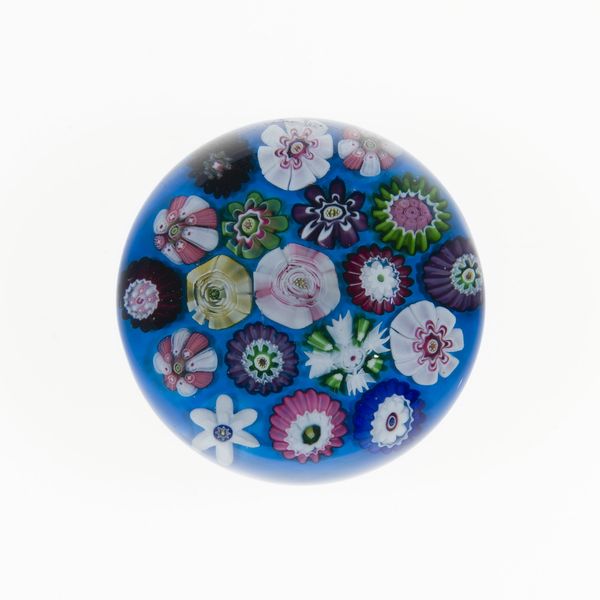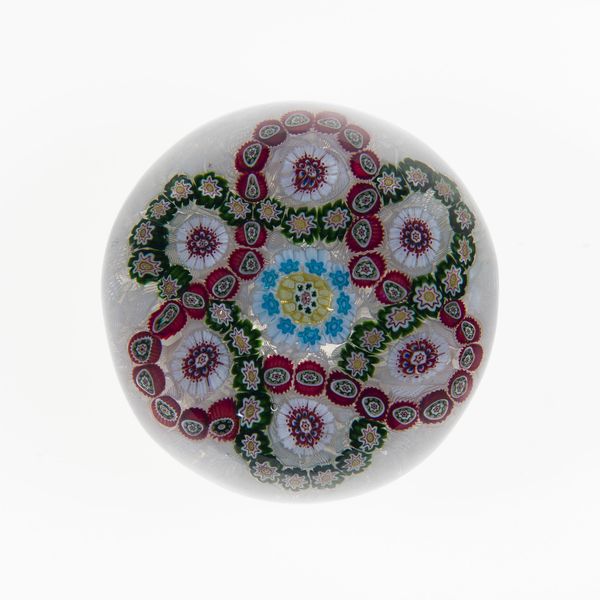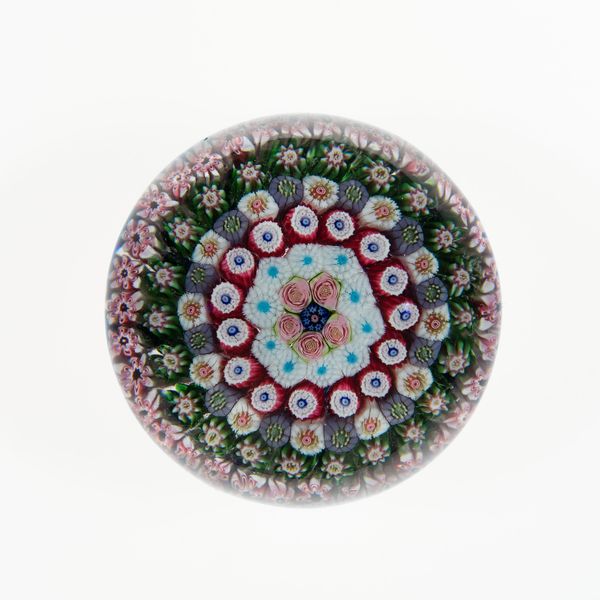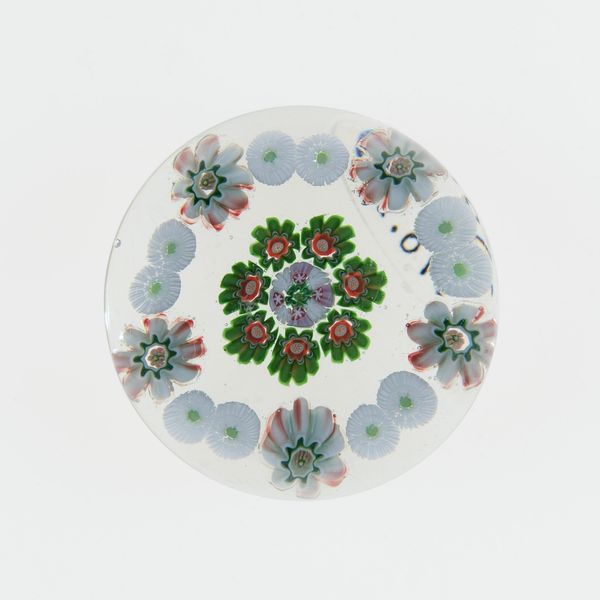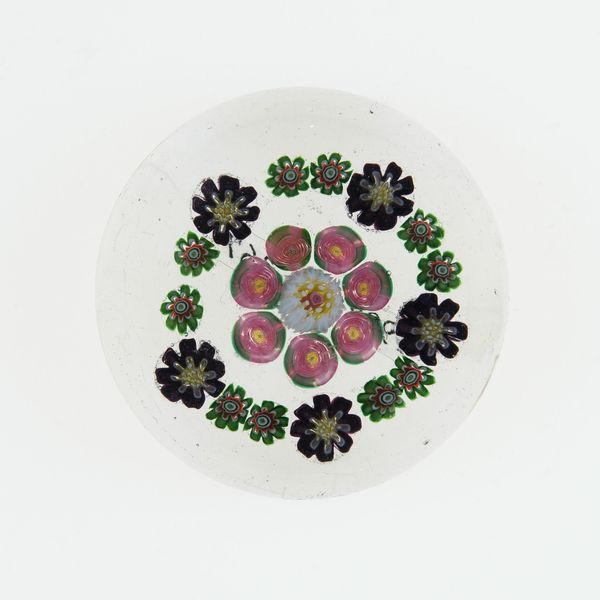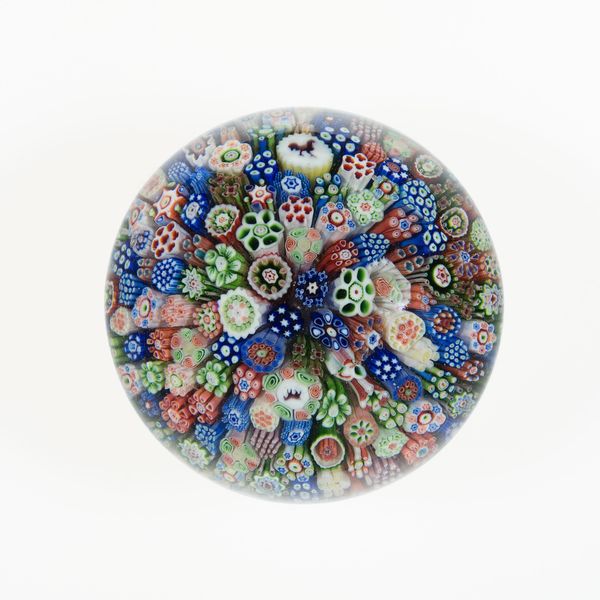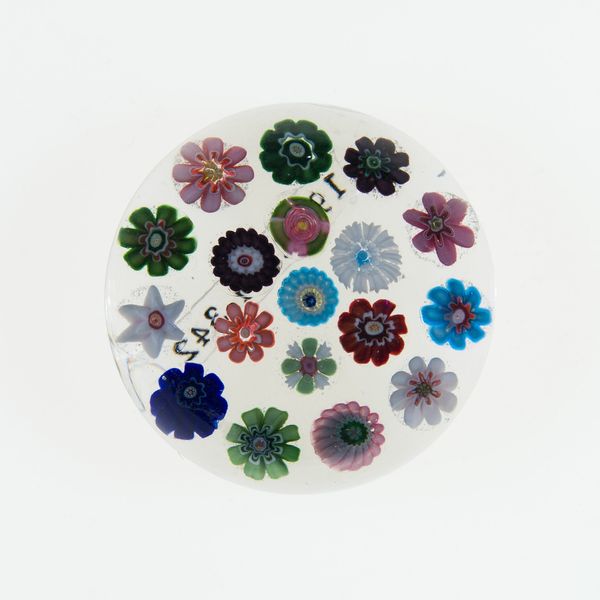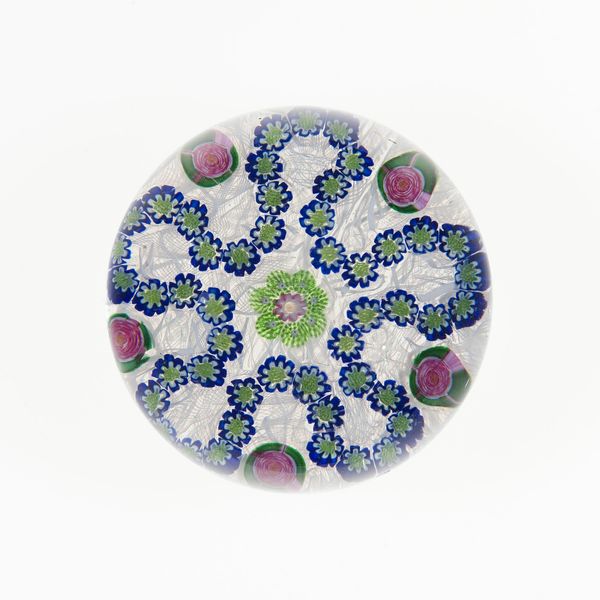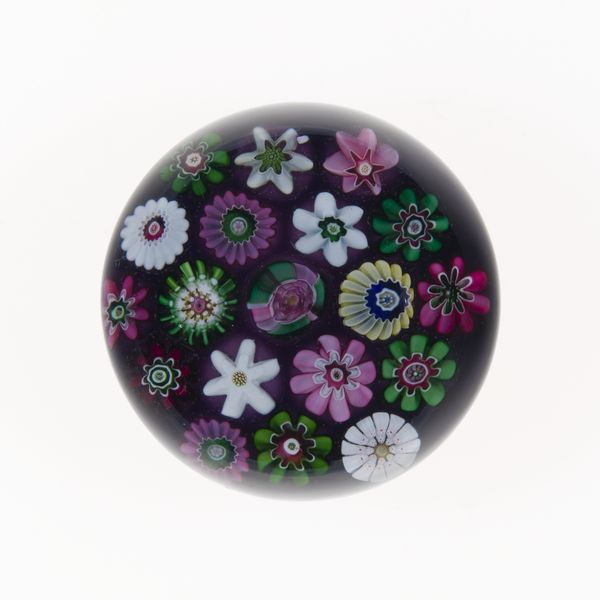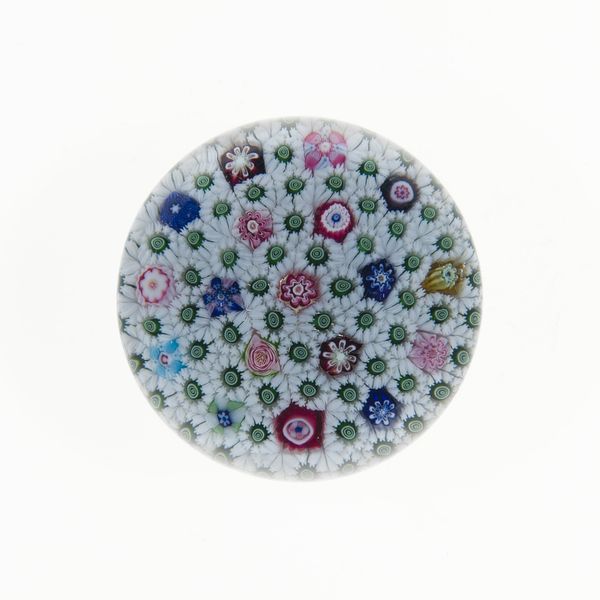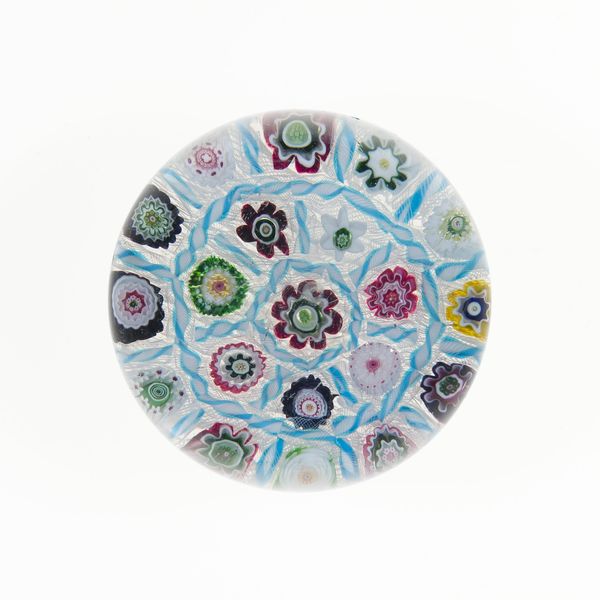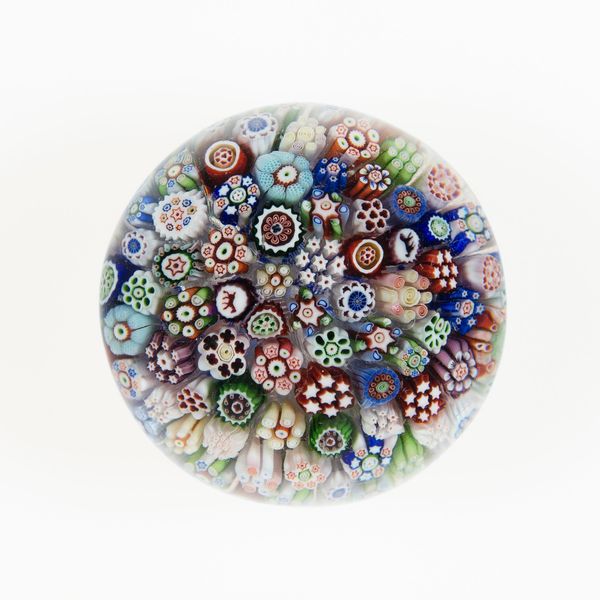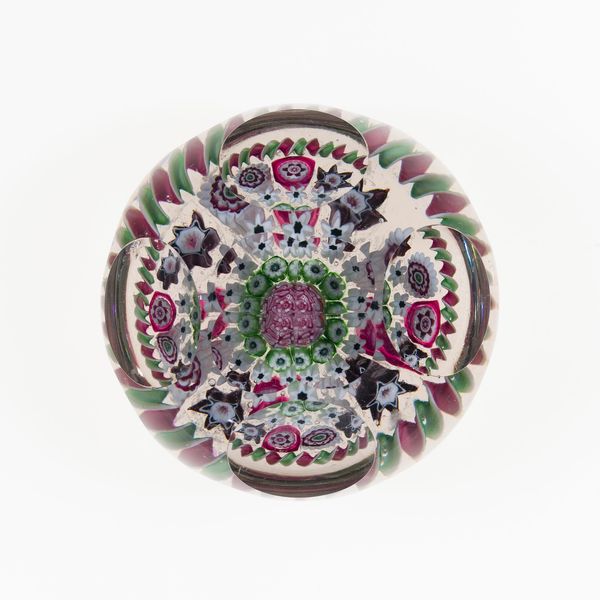
Dimensions: Diam. 7.9 cm (3 1/8 in.)
Copyright: Public Domain
Curator: Oh, how lovely. It’s like peering into a frozen, jewel-toned garden. Editor: Yes, it certainly is captivating. We're looking at a glass paperweight created by the Clichy Glasshouse, likely sometime between 1845 and 1860. Now residing at the Art Institute of Chicago, this piece really speaks to the decorative arts tradition, wouldn’t you say? Curator: Absolutely! It feels whimsical and somehow deeply comforting. I keep thinking about the person who made it. All that meticulous detail trapped forever in glass… Editor: It is fascinating to consider the labor, and the context, too. France during that period saw the rise of industrialization. How does decorative art, especially something so delicate and "frivolous," serve as a counterpoint to rapid societal changes and industrial anxieties? Is it escapism? Or does it reassert older traditions? Curator: I love that tension. Perhaps it's a bit of both. A desperate attempt to hold onto beauty as the world changes at a breakneck speed. The individual "flowers" are these tiny worlds. You can almost feel the artisan crafting it—it's far from machine-made, despite the rise of machines at the time. I think, though, its artistry made it appealing, especially in a culture then forming that included mass produced goods and a kind of mass sensibility. Editor: Right. It highlights the tension between individual artistry and industrial standardization, almost mirroring the growing class disparities, the unique versus the homogenous, even now. This one has been preserved, but others have certainly disappeared or been discarded—revealing issues of valuation. Who decides what's worthy of preservation and what isn’t, and based on whose values? Curator: That’s a sobering thought—the whims of history, shaping what we value, or, more accurately, what’s been left over. Even this piece now—a mere desktop ornament—acquires all of these extra layers of meaning now that it's being preserved. Editor: Yes, context transforms everything, doesn’t it? It is simply a small beautiful object, but one loaded with cultural, historical, and theoretical weight. Curator: I suppose even the smallest jewel can reflect the whole world, can’t it?
Comments
No comments
Be the first to comment and join the conversation on the ultimate creative platform.
